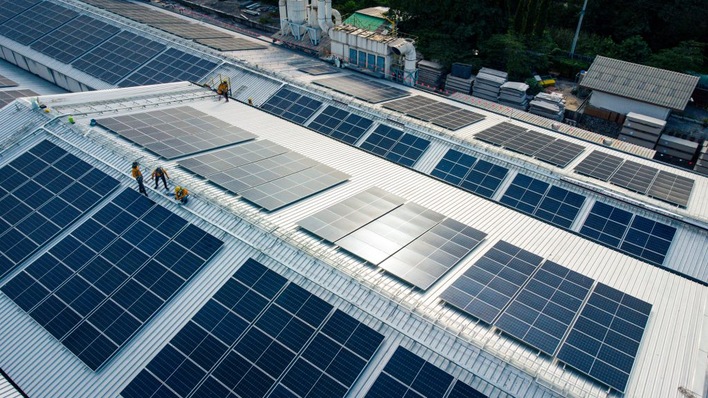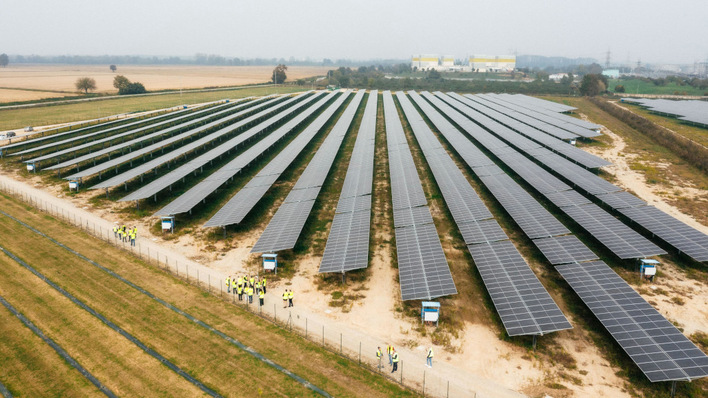A Minnesota cooperative utility, Great River Energy, made an astounding economic decision to close its largest coal plant, switching instead to two-thirds of its power from wind electricity. In 2020 the state’s second largest electricity producer announced it will in 2022 close its North Dakota 1,151 MW Coal Creek Station, taking the utility down to zero coal generation. Instead, GRE will replace coal largely with new wind farms located in Minnesota, but also in Iowa and South Dakota.
Coal Creek plant loosing too much money
Coal Creek is now one of the largest coal electricity plants in the Upper Midwest. The reason for the unanimous 2020 vote by the 28 retail electricity cooperative distribution members of the not-for-profit wholesale cooperative: There are options—other fuels, especially wind power—that are cheaper than operating the Coal Creek Station. Great River’s CEO, David Saggau, notes that the business closure of Coal Creek “will serve our 700,000 Minnesota members well for decades.” The company’s analyses proved that Coal Creek “is losing too much money.”
The United States is undergoing a fast replacement of coal power with wind and solar electricity, led by several of Minnesota’s electric utilities including Great River Energy and Xcel Energy. Power suppliers in the cold heartland of Minnesota face a further challenging issue: with the transformation of electricity to close to zero-carbon: how do they maintain system reliability during extreme weather conditions including the polar vortex in some winters, and the projected increase in heat waves caused by climate change in future Minnesota summers.
150 hours of energy storage
Great River Energy will be testing a new battery to provide enough “baseload” power to retain the reliability of its electric system during these extreme prolonged periods of challenging cold and hot weather with disappearing solar and wind resources? The utility has launched a pilot program for a new power-storage technology that would warehouse electricity for considerably longer than current grid batteries. They’ve selected storage technology developed by Massachusetts-based Form Energy that would deliver power for 150 hours, an unprecedented achievement for storage. The Form Energy 1-MW battery would be completed in 2023 and located in Cambridge, Minnesota.
Did you miss that? Innovative long-term storage technology recognized
Today’s best grid batteries are large lithium-ion systems that cost hundreds of dollars per kWh and provide about 4 hours of storage. Great River’s largest member coop, Connexus Energy, has created two “Solar plus Storage” sites using 3,150 lithium-ion phosphate batteries. But during polar vortex conditions and heat waves in Minnesota, the sun and the wind don’t just fade for hours; these resources may disappear for days or more than a week.
Maintain grid reliability with long-duration storage
To shift mainly to renewables, energy suppliers are going to need cheaper storage that can last much longer than 4 hours. Jon Brekke, GRE’s vice president, said that long-duration storage will help maintain grid reliability during these extreme conditions. Flow Energy contends their sulfur-air batteries will be 30 times cheaper than lithium-ion batteries.
Did you miss that? Joint venture to develop giga-scale cryogenic energy storage projects in Chile and Latin America
Form Energy’s battery storage system with 150 hours of storage duration will use an as-yet undisclosed proprietary battery chemistry. Form Energy benefited from investments of more than U.S. $50 million to date, from the Massachusetts Institute of Technology, the U.S. Department of Energy, and Bill Gates’s Breakthrough Energy Ventures. The team is led by CEO Mateo Jaramillo and MIT professor Yet-Ming Chiang. They are investigating several types of batteries, including an aqueous-sulfur flow battery to provide longer storage at low cost using some of the most abundant, safest and also cheapest materials on Earth.
Cheaper power mix – 95 percent carbon free
The immediate results: Minnesota’s Great River Energy’s customers will benefit by 2023 with a cheaper electricity mix that is 95 percent carbon-free. This is an extraordinary sign of the rapid transformation of the U.S. power market. Great River Energy is likely to become a leading U.S. renewable power supplier. Its CO2 emissions will fall by 95 percent from the Minnesota benchmark year of 2005.
And starting in 2023 we will learn from the Minnesota piloting of 150-hour storage. The details of costs and the duration of power storage will be key to many parts of the globe. (hcn)
Read more from Fresh Energy








